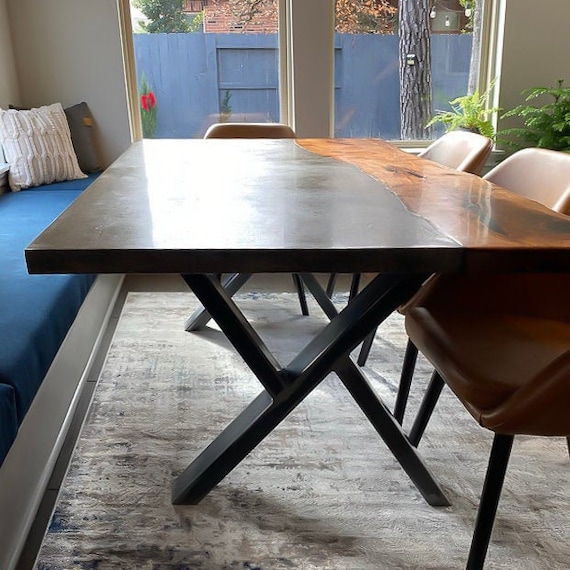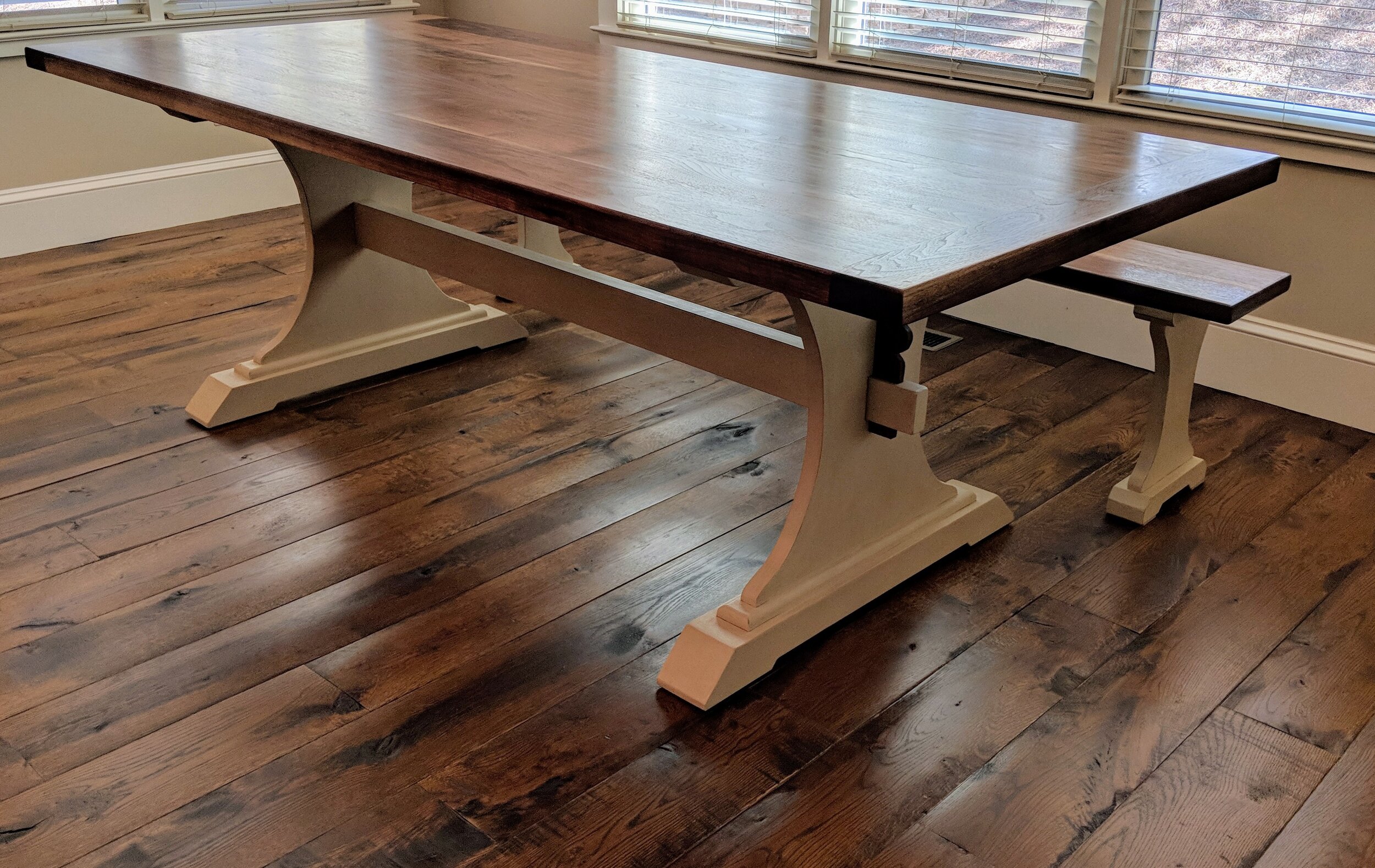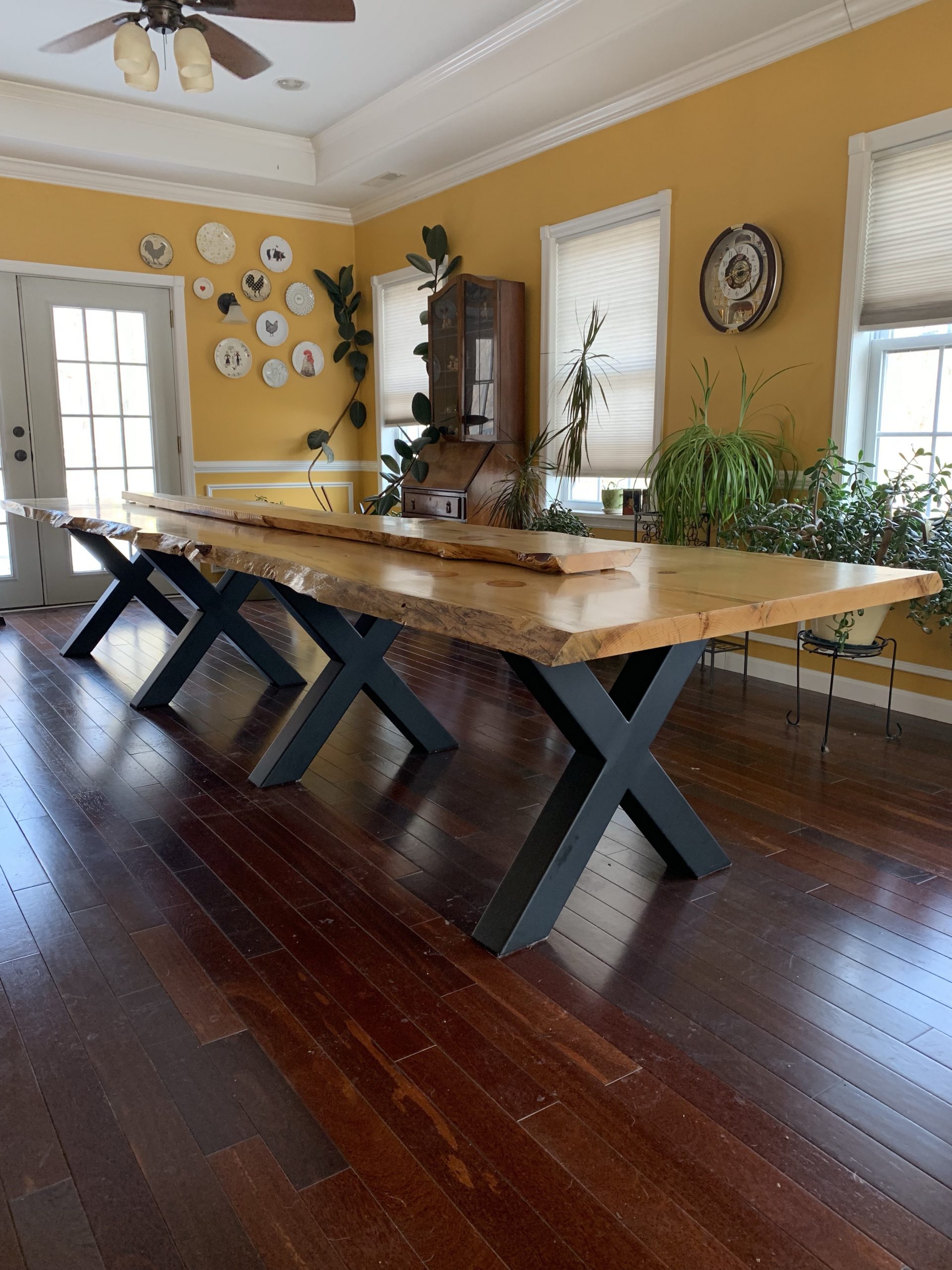Customize Your Table with Special Dining Table Legs Wood Creations
Customize Your Table with Special Dining Table Legs Wood Creations
Blog Article
Discovering the Different Sorts Of Table Legs Wood for Your Dining Area
The choice of dining table legs wood can exceptionally influence both the visual and functional top qualities of your eating area. Solid timber options, such as oak and walnut, give a timeless look with unrivaled resilience, while engineered timber options offer ingenious styles that mimic the richness of natural grains. In addition, the growing fad of recovered wood introduces a sustainable element that attract environmentally mindful consumers. As we check out these different choices, it comes to be necessary to think about not just the visual appeal yet additionally the useful effects of each material choice. What variables should guide your decision?
Strong Wood Options

Furthermore, strong timber is renowned for its toughness and long life. Unlike engineered products, strong timber is less prone to warping and damage over time when correctly maintained. This makes it an ideal selection for households or those that often host celebrations. Each piece of strong wood is one-of-a-kind, showcasing private features that include to the charm and character of the dining table.
Furthermore, strong timber can be completed in many methods, varying from all-natural oils to tarnished coatings, permitting home owners to personalize their furnishings to match their style. In summary, choosing solid timber for dining table legs not only ensures architectural integrity yet additionally boosts the visual appeal of the dining area, making it a worthwhile financial investment for any type of home.
Engineered Timber Alternatives

Plywood, built from multiple layers of timber veneer, is particularly solid and steady, making it an excellent choice for dining table legs. Its layered make-up enables it to hold up against modifications in moisture and temperature much better than traditional strong wood. MDF, on the various other hand, provides a smooth surface area for painting or veneering, making it possible for designers to attain a sleek appearance while maintaining architectural honesty.
Particleboard, usually utilized in budget-friendly alternatives, provides suitable strength and is light-weight, making it less complicated to manage. However, it might not be as sturdy as plywood or MDF. When choosing crafted timber options, it is vital to take into consideration the designated usage and desired visual. These products not just enhance the performance of eating spaces however additionally enable greater style versatility, guaranteeing that conventional and modern styles can coexist harmoniously.
Reclaimed Wood Features
Reclaimed wood offers a distinct blend of sustainability and personality, making it a significantly preferred selection for dining table legs. Sourced from old barns, factories, and other structures, reclaimed wood symbolizes a background that brand-new products simply can not replicate. Each piece lugs its very own story, noted by distinctive blemishes, knots, and differing grain patterns, which add to a table's one-of-a-kind visual charm.
In enhancement to its aesthetic beauty, recovered wood is an eco pleasant choice. By repurposing previously made use of products, it decreases the need for new lumber, thus aiding to save woodlands and lessen waste. This aligns with an expanding consumer choice for lasting methods in decor.
Moreover, recovered wood is frequently more durable than newly gathered wood because of its age. The natural drying out procedure that reclaimed timber goes through lead to a denser and stronger product, making it less prone to warping and splitting. This improves the long life of dining tables, allowing them to stand up to the rigors of everyday use.
Softwood vs. Hardwood
When choosing eating table legs, recognizing the distinctions between softwood and hardwood is critical for achieving both aesthetic and practical goals. They usually display a more rustic appearance, making them suitable for country-style or informal eating rooms.
On the various other hand, woods, sourced from deciduous trees like maple, cherry, and oak, are renowned for their thickness, toughness, and resilience. The complex grain patterns and rich shades of hardwoods supply a innovative and classic allure, making them excellent for official eating setups. While hardwoods have a tendency to be a lot more costly and much heavier, their durability against wear and tear typically validates the investment.
Ultimately, the choice in between softwood and hardwood for dining table legs need to straighten with your design vision, usage demands, and spending useful content plan, ensuring that your eating room shows your individual design while staying practical gradually.

Surfaces and Therapies
The visual charm and durability of eating table legs can be considerably enhanced with different surfaces and therapies. These processes not only safeguard the timber from damage but also boost its appearance, enabling it to complement varied indoor designs.
One common treatment is tarnishing, which passes through the timber and improves its natural grain while adding color. Discolorations provide a rich, elegant appearance, making it possible for house owners to match their furniture with existing design. On the other hand, clear finishes such as polyurethane or varnish produce a protective layer without altering the timber's original tone, making certain longevity versus deterioration.
Additionally, natural oils, like tung or linseed oil, nurture the timber and supply a refined sheen, all while being environmentally friendly. These oils allow the surface area to breathe, preventing moisture buildup and prospective warping.
For those seeking a rustic charm, weather-beaten or troubled surfaces can be related to produce an aged appearance, including character to the item. Ultimately, the selection of therapies and finishes relies on personal choice, desired visual appeals, and the specific wood kind, making it essential to click to read more take into consideration helpful hints these elements when picking table legs for your room.
Final Thought
To conclude, the choice of eating table leg products considerably affects both the practical and visual aspects of a dining area. Strong woods, engineered options, and redeemed choices each deal unique benefits, accommodating different choices and needs. Comprehending the distinctions between softwoods and hardwoods, in addition to proper finishes and treatments, enables informed decision-making. Ultimately, the selection of timber type ought to straighten with wanted style, toughness, and ecological factors to consider, enhancing the general dining experience.
The choice of eating table legs timber can greatly influence both the functional and visual top qualities of your eating room - Dining Table Legs Wood. Solid wood choices, such as oak and walnut, supply a traditional look with unrivaled longevity, while crafted wood options use cutting-edge styles that imitate the richness of natural grains. Strong wood uses a timeless quality that can boost the total layout of an eating area. Each piece of strong timber is special, showcasing private qualities that include to the appeal and character of the eating table
Furthermore, reclaimed timber is typically a lot more sturdy than freshly harvested timber due to its age.
Report this page